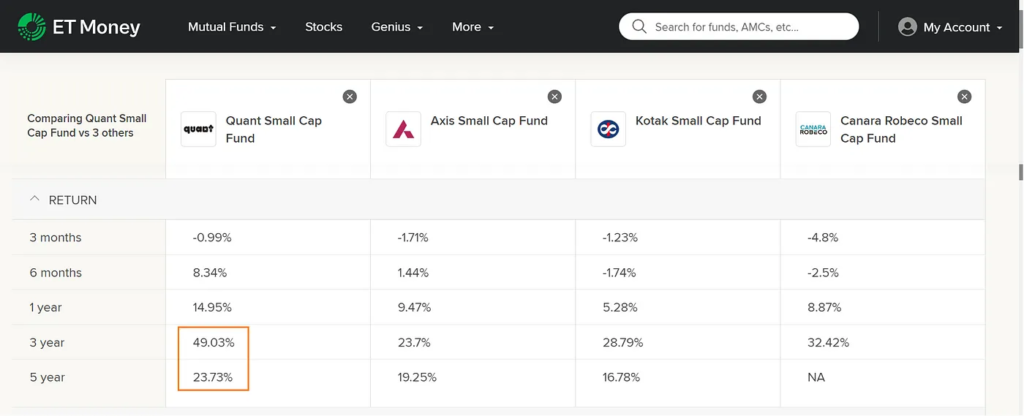What is the fuss?
One often finds online advise on using the right parameter to pick mutual funds. One such metric thrown around is the turnover ratio of the mutual fund. I find many online advise on avoiding a mutual fund because it has high turnover ratio. This, is not entirely correct. In this post, I will cover what exactly is turnover ratio, and how to use it to evaluate mutual funds. Lets get started.
What is Turnover Ratio?
Turnover basically means the rate at which you are replacing things. In the context of a Mutual Fund, it means the rate at which the stocks in the Mutual Fund’s portfolio are being replaced.
Example: A mutual fund has 100 stocks in its portfolio. If 50 of these stocks are replaced with new stocks in the next 1 year, the turnover ratio is 50/100, or 50%.
There is no formal definition of high or low turnover ratio. However, anything more than 30% is considered high turnover ratio. Less than 30% is considered ok. Less than 10% signals low turnover ratio.
Is High Turnover really bad?
Lets take a noob view of turnover ratio. Lets say, a mutual fund has turnover ratio of 100%. It means that the fund manager is replacing all stocks in less than a 1 year.
This sounds crazy, right? Does the fund manager not know how to pick stocks correct the first time? Investing veterans such as Mr. Warren Buffet say that money is made in the stock market by enjoying compounding over long term. Too much selling and buying new stocks stops the compounding effect.
Does this mean that as a retail investor, I should avoid mutual funds with high turnover ratio? Well, not exactly! As an investor, you should worry about your returns. Your returns are impacted by (a) the fees you pay to the mutual fund manager, and (b) the annual returns you make from the mutual fund. Lets study these two parts, which impact your returns in a little more detail.
Cost of High Turnover Ratio

If you have individually bought and sold stocks directly in the secondary market (through brokers such as Zerodha or Upstox), you know that each time you buy or sell stocks, there are brokerage fees involved. So, buying and selling too many stocks will increase the transaction fees. So, a mutual fund with high turnover ratio will have a higher transaction cost associated?
The answer is no. A mutual fund will not charge the investor transaction fees each time it buys or sells a stock. The only fees charged by the mutual fund is the total expense ratio (TER). This includes all the costs borne by the mutual fund house to run the mutual fund. These costs also include the mutual fund manager’s salary, marketing costs, administration cost etc.
So, as a retail investor, you need not worry of high turnover ratio in a mutual fund costing you more. But is there any other cost impact? Yes, there is. Typically, it is seen that mutual funds with high turnover ratios have higher TER.
Why high turnover ratio = higher TER you ask? Well, the reason is, higher turnover ratio means higher degree of active fund management. This leads to more frequent analysis, buying of paid research reports, cost of deploying quant models, and a larger analyst team.
High turnover = higher TER is not a formal rule, but more of an observed trend. Look at the four leading small cap mutual funds below. We see that Quant Small Cap fund, which has the highest turnover of 58%, also has the highest Expense Ratio of 0.62%.

The important thing to note here is, that expense ratio does not increase proportionately to the increase in turnover ratio. Example: if the expense ratio is 0.40% at turnover of 10%. Then, if turnover increases 5 times to 50%, the expense ratio will not increase by 5 times to 2%. The increase in expense ratio is very small, as indicative in above image. With turnover ratio of 6–7%, the expense ratio is 0.50%. With turnover ratio of 58%, the expense ratio is 0.62%.
Hence, as a retail investor, you should not worry about higher turnover ratio costing you more. There might be slight increase in expense ratio, but a very small percentage (5–10 bps difference), which can be ignored.
Returns of Funds with High Turnover ratio
Lets us now look at the meaty part. Does high turnover ratio funds give higher returns? It may seem like they do. Refer below image, comparing the same four small cap mutual funds we compared in the earlier section.
We see, that the fund with the highest turnover ratio (Quant Small Cap fund), also gives the highest returns in the long term (3 year and 5 year annualized returns).

Hmmm, now that is interesting! So high turnover mutual funds do not cost a lot more, and give a much higher returns. Then I should only invest in mutual funds with the highest turnover ratio? Well, not so fast. Lets look at the reason behind why some mutual funds have high turnover ratio, and then decide if these funds are the right fit for you.
Why do mutual funds have high turnover ratio?
There are different styles of equity portfolio creation. The three most popular investment styles are as follows:
Value Investing
Value investing style tries to pick well run companies, with good future growth strategy, at discounted prices. The value investing style is also known as buy and hold strategy. It requires to buy fairly priced or underpriced companies, and patiently wait for returns to come over the next 3, 5, 10 years. I think you get the relation between value investing style and turnover ratio. Value investing style leads to very low turnover ratio.

Value investing is one of the oldest investment styles. Investing veterans such as Mr. Warren Buffet popularized value investment styles. However, patience is not the strongest virtue of the modern investors, who crave for quick returns. This tendency has popularized the next two investment styles.
Growth Investing
Growth investment style aims to make returns by buying high growth companies, even if they are available at high valuations. The idea here is to find companies which will grow disproportionately in the near term future. High growth companies are available at higher premium price. Even if some growth companies falter and give negative returns, other growth companies are expected to outperform and provide alpha for the portfolio.

Growth investing has higher turn over ratio as compared to value investment style. Growth investing does require to remain invested for short to medium term, to reap returns from the growth cycle which can last anywhere from 6 months to multiple years.
Momentum Investing
The new kid on the block, momentum investing, rides the positive momentum in stocks. This investment style does not stick to a company. If a stock is showing positive price momentum, the momentum is expected to continue for some more time before plateauing or reversing. Momentum investing invests in good quality stocks showing positive momentum, and exit any stock whose momentum has slowed down, or is showing negative momentum.

Momentum investment style has very high churn rate. Even good companies do not forever show positive momentum. Sometimes, momentum investing can churn the entire portfolio within a matter of months.
So, now you know, that based on investment style, a mutual fund may have higher turnover ratio, or less. There is no definite evidence of which investment style gives the highest returns over the long term. This is something that time will tell. There is one certain thing, no matter which investment style you choose, as long as you are experienced and disciplined, you can make money in the stock market.
Of the small cap funds we compared in earlier two sections, Quant fund follows momentum investment style, and has visible higher turnover ratio. Axis Small Cap fund follows more of value investment style, and has a low turnover ratio of 6%.
Choosing Funds based on Turnover ratio
With the information on what turnover ratio is, why it is high, and how it impacts your fund’s cost and returns, it is time to cover the last leg of the discussion. How to use turnover ratio to pick mutual funds. I, do not use turnover ratio, to determine which mutual fund to invest into. The reason is simple, I like keeping things simple :-). If turnover ratio does not impact my mutual fund cost, and may actually give higher returns, why should I worry about one more parameter while evaluating a mutual fund.
For mutual fund evaluation, I already use expense ratio and long term returns. This is what matters to me as an individual investor. If a high turnover ratio fund is making me good returns, and not charging me a very high fees, my investment goal is met.
This is my take on using turnover ratio. If a metric is not directly resulting in impact on my cost or returns, I would not over-complicate my mutual fund selection process.
As a retail investor, you need to evaluate using turnover ratio as you deem fit. If you like value investing style, select funds with low turnover ratio. If you are like me, and want to focus on the outcome and not on the process which goes into creating that outcome, you can neglect turnover ratio metric.
Parting Thoughts
It is important to understand a metric well enough to decide whether to use it or not. I do not use it, at least not as a primary criteria in picking mutual funds.
Knowledge builds confidence. Without knowing, you might have always felt like you were missing out on using turnover ratio in selecting mutual funds. Contradicting investment advise would have confused you even more. Hopefully, now you know whether you want to use, or not use, turnover ratio. And if someone asks you, you can give your reason for using or ignoring this parameter.
Lastly, successful investing is about staying clear of the noise, and being consistent with your investment framework. Every year, analysts and the investing world create some new metric/s to evaluate a company/fund, predict future cash flows etc. This prolongs the list of metrics a retail investor like us are expected to know and deploy while investing. Keeping it simple, and sticking to basics, is a better alternative.
Hope that helped!
What is the turnover ratio of your favorite mutual fund? Do share in the comments below.




